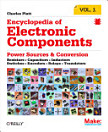Multidisciplinary Applications of AI Robotics and Autonomous Systems
About this ebook
Multidisciplinary Applications of AI Robotics and Autonomous Systems addresses these challenges by presenting cutting-edge research and innovative robotics and autonomous systems solutions. By exploring topics such as digital transformation, IoT, AI, and cloud-native computing paradigms, readers will understand the latest advancements in the field. The book delves into theoretical frameworks, computational models, and experimental approaches, offering insights to help researchers and practitioners develop more intelligent and autonomous machines.
About the author
Anitha Mary X completed her B.E.Electonics and Instrumentation Engineering from Bharathiar University in the year 2001, M.E VLSI Design from Anna University in the year 2009, and Ph.D from Karunya University in the year 2015. She is working as an Associate Professor in the Department of Robotics Engineering, Karunya Institute of Technology and Sciences, Coimbatore. Her academic record holds fifteen years of teaching experience. She has 30 Scopus Indexed Publications to her credit. She works in Multidisciplinary research areas in the field of Embedded Systems and sensor interfacing with experts from countries like Israel and Canada. The areas of her expertise are Sensor design, embedded system control algorithms, and Machine Learning Techniques. She is the author of the book “A Beginners Guide for Machine Learning Models with Python Environment” published by LAP LAMBERT Academic Publishing
|Subrata Chowdhury - Editor|Dr. Subrata Chowdhury is currently working as an associate professor in the Department of Computer Science and Machine Learning at Sreenivasa Institute of Technology and Management Studies, Chittoor, AP. He has worked in the R&D development of the IT industry for more than 5 years. He has completed many projects in the industry with much dedication and perfect time limits. He has handled various projects in AI, blockchain, and cloud computing for national and international clients. He published four books from 2014 to 2019 on the domestic market, and he edited two books for international publishers like CRC, River, etc. He has been involved in the organizing committee and technical program committee and has acted as a guest speaker for more than 10 conferences and webinars. He has also reviewed and evaluated more than 50 papers in conferences, journals, book chapters, and science articles in the areas of AI, data science, IoT, blockchain, and cloud computing for CRC, Springer, Elsevier, Emerald, IGI-Global, and Inder Science Publishers. He is the Associate Editor of JOE, IET, Wiley, and other journals. He has taken part in various workshops, webinars, and FDPs as a resource person. He has published more than 100 research papers, copyrights, and patents to his credit. He has been awarded by the International and National Science Societies for his eminent contribution to the R&D field. He has received travel grants, and he is also a member of the IET, IEEE, ISTE, ACM, and other professional bodies.
Karthik Chandran (Member, ACM, Senior Member, IEEE) was born in Madurai, Tamil Nadu, India in 1986. He received the Bachelor of Engineering in Electronics and Instrumentation Engineering at Kamaraj College of Engineering and Technology, India in 2007, the Master's Degree and Ph.D. Degree in Control and Instrumentation Engineering from Kalasalingam Academy of Research and Education (KARE), in 2011 and 2017. In 2011, he joined the Department of Instrumentation and Control Engineering of KARE, India as Assistant Professor. After that, He served as a Lecturer in the Department of Electrical and Computer Engineering, University of Woldia, Ethiopia from 2016–2018. Presently, He was served as a Postdoctoral Researcher at Shanghai Jiaotong University, China. He is serving as Associate Professor in Mechatronics Engineering, at Jyothi Engineering College, Kerala. He is currently involved in research related to Time delay Control problems, Nonlinear system identification, Cascade Control system, and Unmanned vehicle.
C. Suganthi Evangeline currently working as Assistant Professor in the department of Electronics and Communication Engineering at Sri Eshwar College of Engineering, Coimbatore. [Editor]




